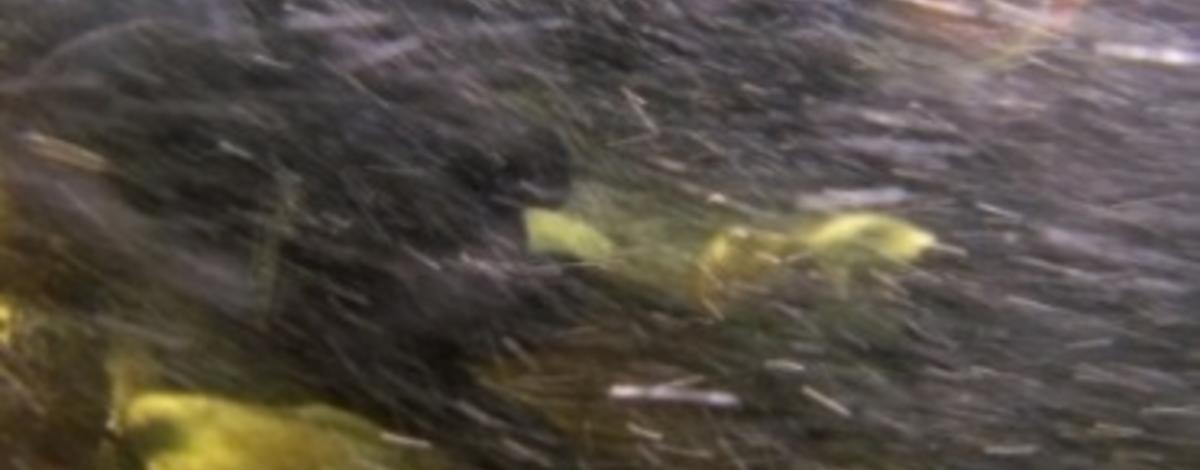The next time you see a group of people crawling face down up a stream in wetsuits, don’t be alarmed. It’s probably an Idaho Fish and Game snorkel survey crew collecting information to help better understand and monitor Idaho’s salmon and steelhead populations.
Every year salmon and steelhead migrate hundreds of miles from the ocean to spawn in Idaho’s rivers and streams. Despite having some of the best spawning and rearing habitat in the Pacific Northwest, most salmon and steelhead populations in Idaho have been listed as threatened or endangered under the Endangered Species Act. As such, a tremendous amount of effort has occurred to improve salmon and steelhead abundance.
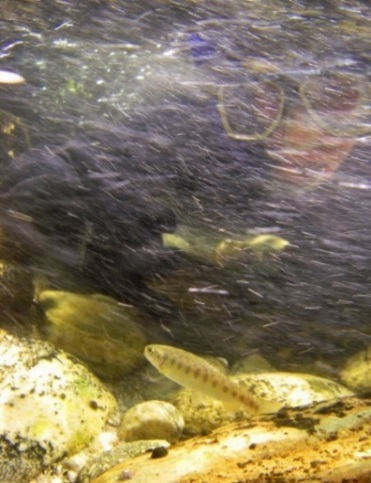
For us to truly understand how improvements are benefitting wild salmon and steelhead, we need to know how these fish populations are responding. In Idaho, many of the rivers and streams that salmon and steelhead spawn and rear in are remote and difficult to get to. Surveying fish in remote, cold, fast-flowing, rocky, and nearly sterile streams can be challenging. Netting, electrofishing, trapping, and other traditional techniques can be nearly impossible in these conditions. What we have found to be the most effective and efficient way to survey fisheries in these environments is through snorkel surveys.
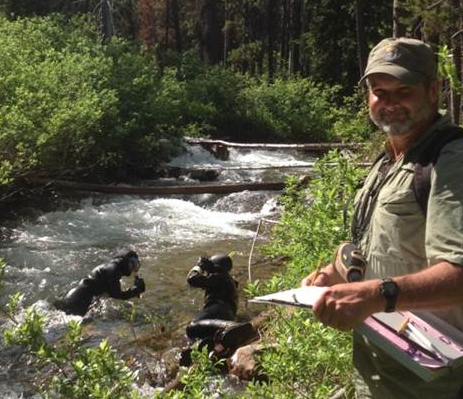
Idaho Department of Fish and Game has been snorkeling streams since the 1950’s to collect data that helps biologists understand and monitor the status of juvenile wild salmon and steelhead. Collecting good snorkel data isn’t as easy as it may seem. Not only must you be able to differentiate adult fish species from each another, but you also have to tell the difference between the juveniles and then estimate their length to the inch. Snorkelers must be able to identify Chinook, Coho, and Sockeye salmon, steelhead, Mountain Whitefish, and several resident trout species. In addition, non-game fishes such as daces, shiners, suckers, and sculpins are recorded as well as freshwater mussels, and amphibians.
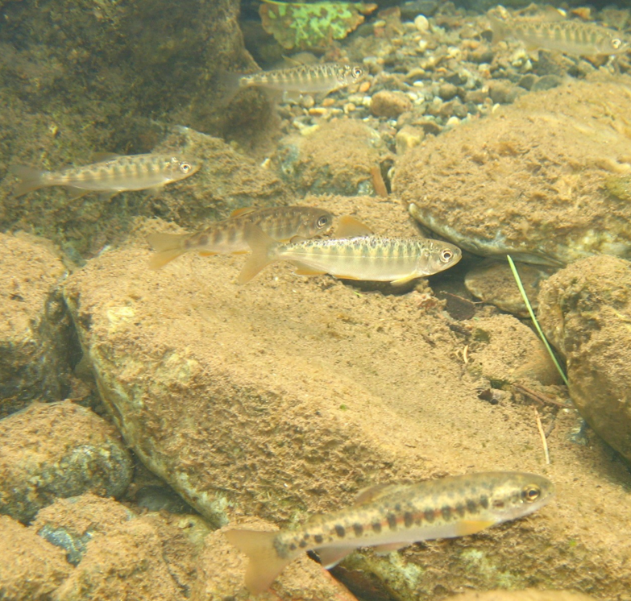
To insure our snorkel crews are prepared, they must go through a significant training program. It starts in the classroom where they learn to identify fish, then it progresses to a swimming pool where they learn to estimate fish lengths, and finally it ends with in-stream practice where beginning snorkelers are paired alongside experienced crew members. Because crews regularly work in backcountry locations, they are also trained in first-aid and swift-water rescue.
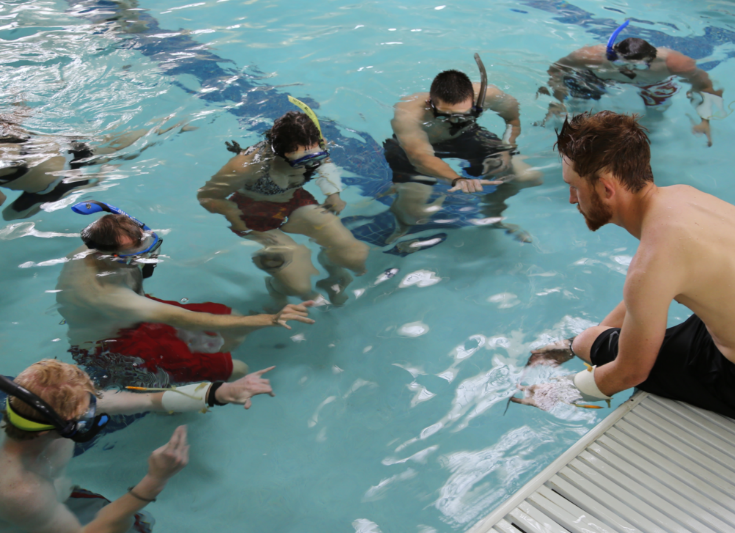
Accessing snorkel sites can be quite challenging. Crews go by foot, horse, plane, jet boat, and raft to reach them. Remote sites typically involve a day or two of hiking and an overnight stay along the stream. Crews are generally in the field for eight days at a time.
Once the crew reaches a snorkel site, it typically entails, belly crawling 50 to 200 yards upstream, against strong currents, over and around rocks, and in bone-chilling water. When the crews are done for the season, they probably are in the best physical shape of their lives. Fortunately, the opportunity to work in such incredible locations easily overshadows any discomfort associated with getting the data.
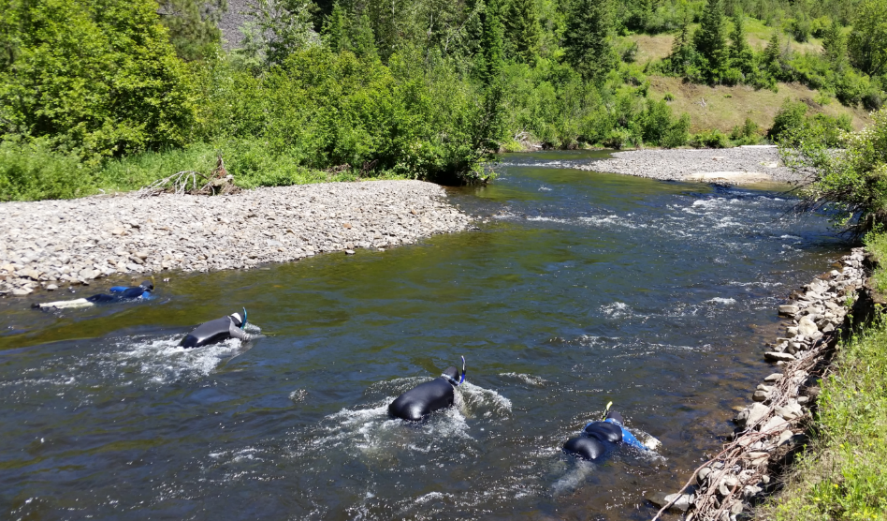
Four, regionally based anadromous fish snorkel crews survey transects throughout Central Idaho each year. In the Clearwater Region alone, at least 172 transects will be visited during the summer of 2017. Data can be analyzed to look at snapshots in time, such as a single year, or over a series of years. To monitor fish abundance trends, the information gathered this year will be added to previous data. Trend data can alert biologists to changes in habitat and/or environmental conditions, and help them monitor the effects of management actions. The data is stored in a central database that is available to the public.
To give you a feel for how we can use this data, we have attached the figure below that shows the steelhead data collected from sites we snorkeled in 2014 and 2015 in the Lochsa River basin. This map shows all the sites we snorkeled during those years, where juvenile steelhead were observed, where we didn’t see them, and where the highest densities were observed. Data like this can be very useful when trying to prioritize habitat restoration work or determine potential impacts from land management activities.

We can also use this snorkel data to evaluate how fish abundance or distribution is changing over time. The graph below is a good example of this as it gives us a feel for how juvenile steelhead abundance has changed in the Clearwater River basin since 1985. The fluctuations in density can be related to a combination of factors such as stream flow, water temperature, changes in habitat, and the number of adults that spawned.
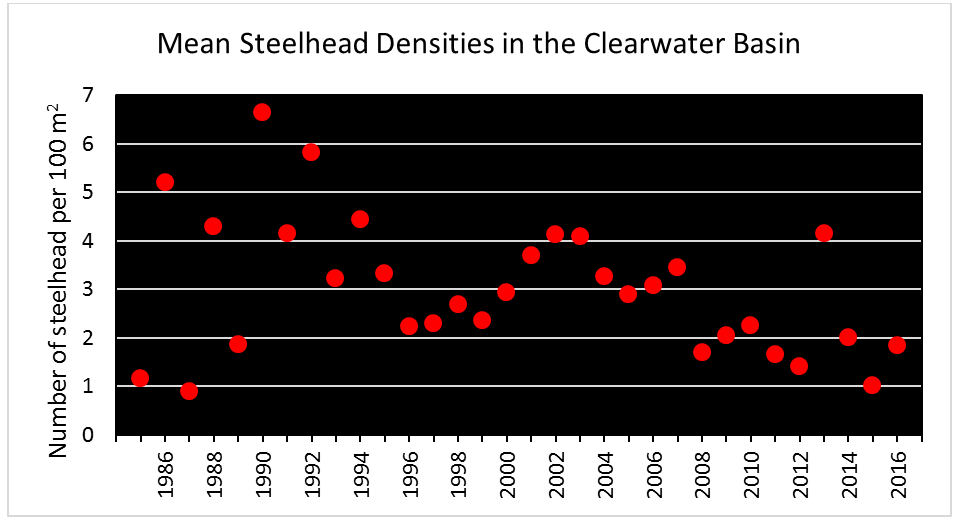
Snorkel surveys will continue to be an important tool to help biologists and fish managers monitor fish status and detect changes in Idaho’s anadromous fish populations. So, next time you see a group of people crawling up a stream in wetsuits, you will know what we are doing and how this information can help us better understand our salmon and steelhead populations.

